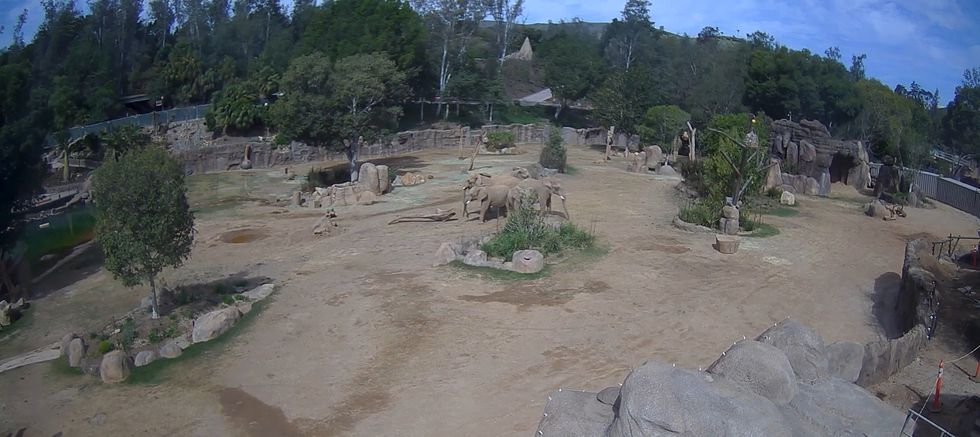Science & Tech
Harriet Brewis
Jul 10, 2024

Startling secrets have been uncovered at the ancient settlement of Erimi, Cyprus
(Luca Bombardieri et al.)
Archaeologists have just unearthed the oldest temple in Cyprus, complete with a mysterious monolith.
Next to the 4,000-year-old sacred building, experts also found the skeleton of a young woman who they believe was brutally murdered.
The historic discoveries were made within the Bronze-Age settlement of Erimi by a team of Italian researchers.
The excavation was led by archaeologist Luca Bombardieri, who has worked at the site for 15 years.
Speaking to the Italian news agency ANSA, Bombardieri described the first of the two finds as a sort of “temple before a temple” – noting that it is so ancient, it predates the common perception of what a temple would be like.
“It’s the oldest sacred space ever found on the island,” Bombardieri said.
At the centre of the ancient building, Bombardieri and his colleagues found a strange 2.3-metre-tall (7.5 feet) monolith and a huge brazier, which they said would have illuminated it “day and night.”
The team said the monolith, which originally stood in the centre of the room, at some point collapsed onto the floor, destroying a large amphora (jug) which had been placed at its feet in front of a small circular fireplace, Arkeonews reports.
They noted that this space stands in stark contrast to the rest of the Erimi site which was, at the time, a primitive settlement inhabited by craftsmen.
Back then, Erimi was a 3000-square-metre-sized Bronze Age workshop complex, featuring dyeing vats, warehouses and homes.
The newly unearthed temple was situated in the innermost part of the workshop and could only be accessed by walking through the working sections.
Bombardieri said he believes its central monolith was used for rituals linked to whatever cult worshipped there, and that its existence highlights the pivotal role religion played in the lives of these prehistoric people.
He noted that the construction of the temple within the bustling environment showed “how complex and rich the lives of these people were — craftsmen who lived four millennia before us, just a few centuries before the first cities on the island were born.”

And yet, the complexities of this community took on a sinister dimension, when the team made a second, very different kind of discovery.
Elsewhere in the Erimi site they pulled up the remains of a young woman who had been brutally killed and her home walled up.
Evidence suggests that her remains had been “sealed” up in the building following her murder, possibly to conceal the crime and to prevent her spirit from “disturbing” the living, All that’s Interestingreports.
Her skull had been smashed in, likely with a rock or spear, after which her killers laid her body on the ground and placed a heavy stone on her breast, “as if to keep her still,” Bombardieri said.
He also noted that the door of the small house in which the woman – who was aged around 20 – was found had been carefully sealed shut, much like a tomb.
And yet, the lack of grave goods buried alongside her indicate that this was no normal burial.
The killing dates back to the Bronze Age, sometime between 2000 and 1600 BC, with Bombardieri suggesting that this femicide “may be linked to other cases recorded in the past in other parts of Cyprus,” in which other women were killed “perhaps for issues linked to maternity.”

These new discoveries help add colour to the picture of Erimi which, in its heyday, was a prosperous and powerful settlement thanks to the vivid red textiles it produced.
However, for reasons that remain a mystery, the town was at some point abandoned abruptly. The temple and workshops were sealed up, with tools and materials still inside.
Evidence suggests that a fire, perhaps set by fleeing villagers, caused the temple’s roof to collapse. Ironically, this very collapse preserved the temple, allowing Bombardieri and his team to discover it thousands of years later.
“The collapse of the structure, sealing off those remains, has enabled us archaeologists to rediscover them after four thousand years,” he said.
The team now aim to conduct further excavations at the site, which they hope will reveal more about its lost history, and perhaps shed some light on the tragic case of the murdered and abandoned woman.
Sign up for our free Indy100 weekly newsletter
How to join the indy100's free WhatsApp channel
Have your say in our news democracy. Click the upvote icon at the top of the page to help raise this article through the indy100 rankings
Top 100
The Conversation (0)













